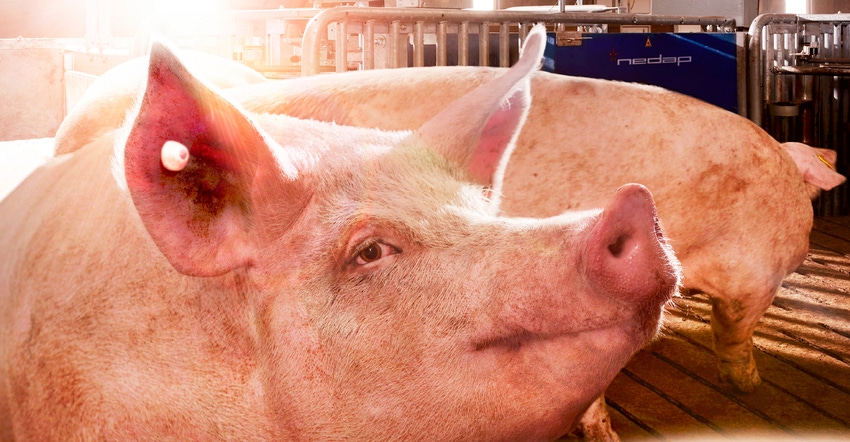Pen and feeder design go hand-in-hand to create optimal group housing system.
August 1, 2020

Sponsored Content
If your sows could choose a style of group housing, they would pick the one designed to keep them calm and comfortable. Electronic sow feeders with forward exits in correctly-designed group pens have been proven for decades to keep sows calm to support productivity and minimal removals caused by injury.1
A high rate of removal can be costly due to added labor, the need for hospital pens or stall space, and reduced sow well-being and productivity.
Consider the differences in system design.
Between 10 and 15% of sows are removed from competitive feeding systems such as stanchions or floor feeding.
Between 3 and 5% of sows are removed from non-competitive systems such as ESF and free-access stalls.2
Operations using ESF with forward-exit feeders report minimal aggression at the feeder entrance and little to no removals caused by feed-guarding aggression.
"The feeder entrance is the most common source of tension in a group gestation pen," says Jeff Morten, Nedap Livestock Management North America account executive. "When feeders and pens are designed to address this challenge, sow aggression is minimized and less likely to cause injury. When these are both taken into consideration, you will save time and expense, in addition to promoting sow well-being."
Keep sows calm and productive in a group gestation management system with these three pen and feeder design strategies.
1. No contact during feeding
Correctly-designed sow feeders protect sows on all sides while they eat. Sows waiting outside a feeder should not be able to touch a sow that's eating. Nor should they be able to enter the feeder while another animal is still in the feeding process.

When a sow can eat without interruption, she is less likely to protect her feed from other sows or become intimidated and be bullied away from her feed.
"The best group setting encourages calm social interaction and discourages bad habits such as feed guarding," says Morten. "Choosing a system that allows each sow within the group to eat calmly without having to defend her feed will ultimately be best for you and your sows."
2. Separate fed and unfed sows
Choose feeders with separate exits and entrances to create one-way-only sow traffic flow and eliminate face-to-face interaction at the feeder entrance.
"Separating fed and unfed sows has been proven for decades to be the optimal strategy to maintain peace in group sow pens using ESF," says Morten. "Poor design forces sows to cross paths when exiting or entering the feeder. Effective pen and feeder design let a sow walk forward, away from the group."
3. Direct sows away from the feeder
Design your pens so sows cannot access the feeder entrance immediately after feeding. An optimal pen design has physical structures that direct sows away from the feeders and continue to prohibit access between fed and unfed sows for as long as possible.
"Sows in group pens with a long walk between the feeder exit and entrance rarely follow through with an urge to guard the feeder," says Morten. "Once they move away from the feeding station, they generally get distracted. After a short time, they will find their social group and lie down."
You don't have to accept the statistics about injuries caused by fighting in group gestation pens. When choosing a system for your new or remodeled group sow barn, think about what's best for your sows. Electronic sow feeders with forward exits within correctly-designed pens will allow your sows to move and eat without conflict to prevent feed-guarding habits. Your reward will be sows that are calm, comfortable and productive.
Contact Jeff Morten at 402-960-8419 or [email protected] to learn more, or visit nedap-livestockmanagement.com/pig-farming.
Nedap Livestock Management, nedap-livestockmanagement.com, is the global leader in farming automation using individual animal identification. Nedap's easy-to-use technology helps farmers manage millions of dairy and beef cattle, and pigs 24 hours a day, in more than 100 countries. Nedap empowers managers and personnel with dependable information to make operational and strategic decisions and has for more than 40 years. Nedap focuses on helping livestock farmers become the best farmers in the world. A publicly listed company, Nedap employs more than 700 people globally, across 11 locations and eight business units
________________________________________
1 London Swine Conference proceedings, 2003
2 London Swine Conference proceedings, 2018
About the Author(s)
You May Also Like



